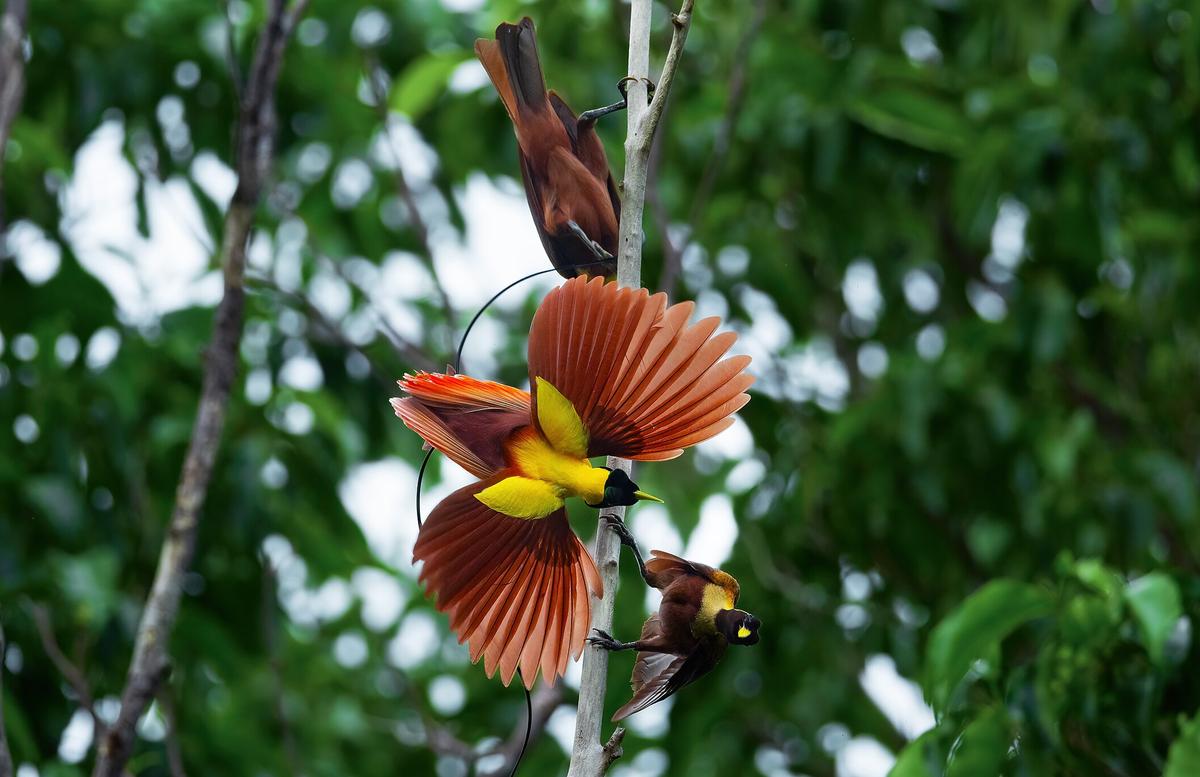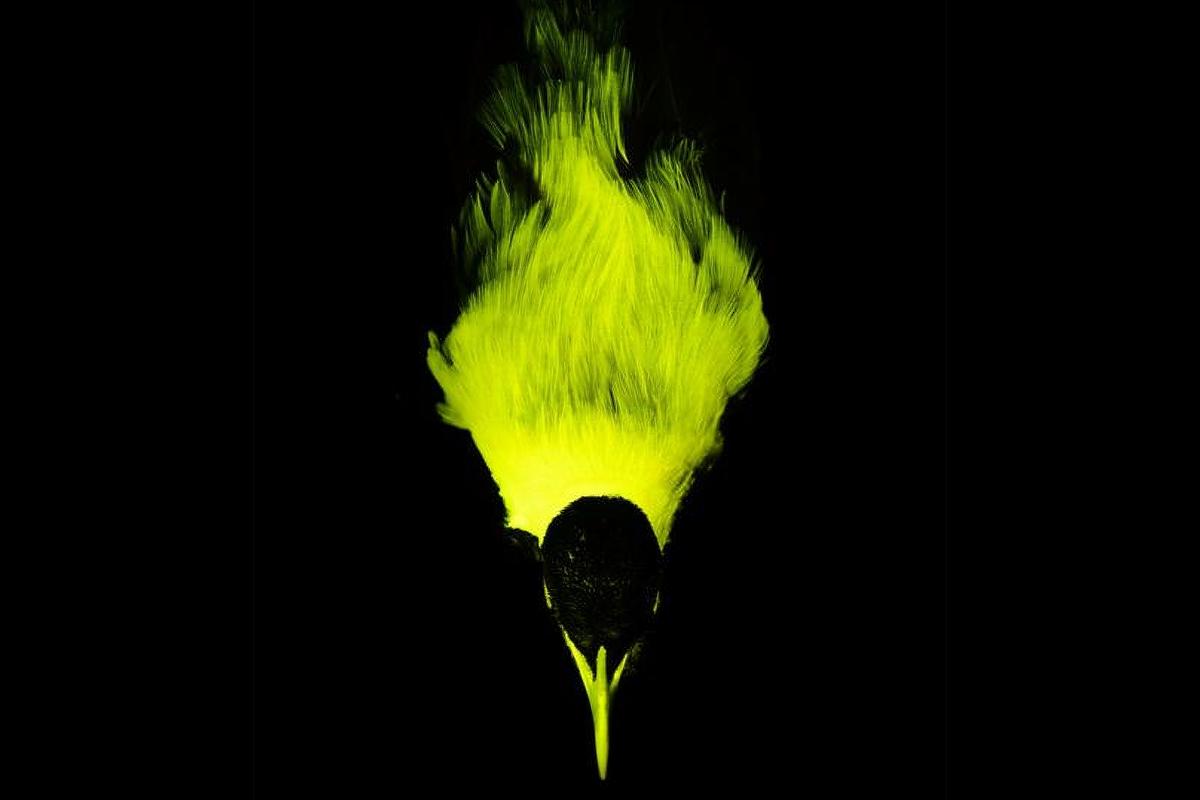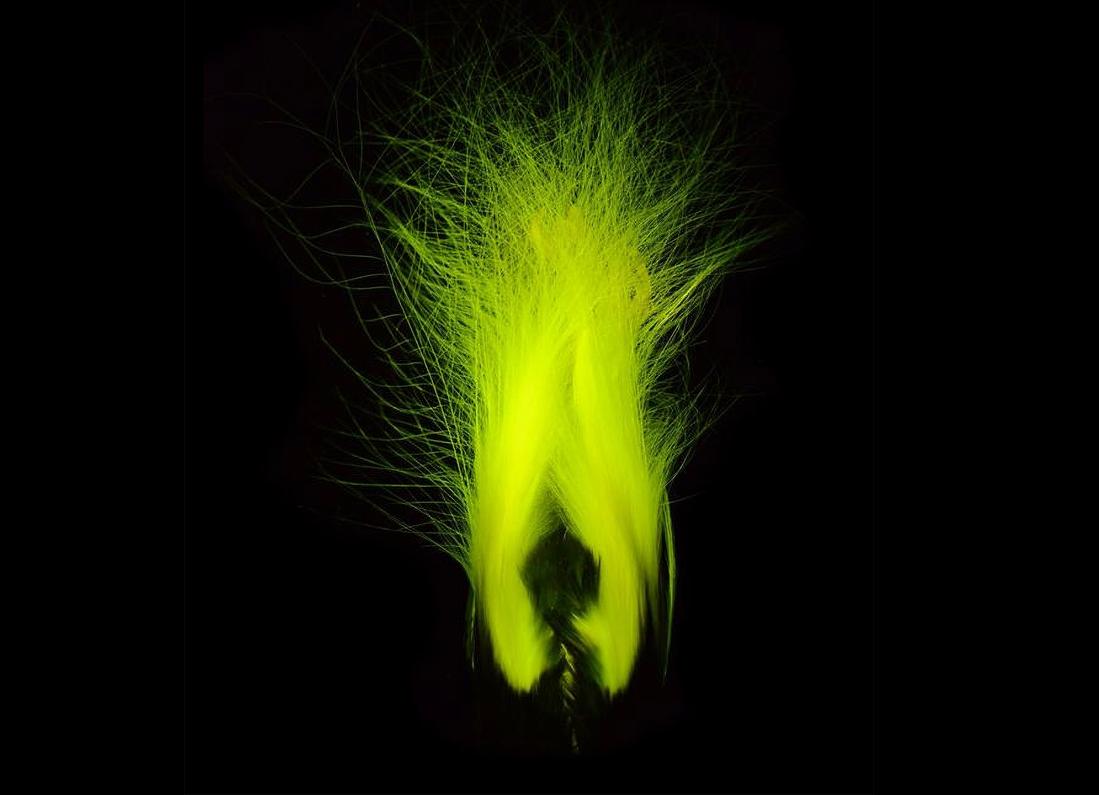Scientists have discovered that many species of birds-of-paradise have feathers that glow. Birds-of-paradise were already well-known for their very colorful feathers and the fancy dances they use to attract mates. The discovery suggests that the birds are even more striking than we knew.
Birds-of-paradise live in the rainforests of Australia, New Guinea, and nearby islands. They are famous for their bright colors and strange and beautiful dances. Male birds-of-paradise dance and show off their colors to attract female birds. But until recently, no one knew that the birds also glowed.
The scientific word for this glowing is “biofluorescence”. That’s different from “bioluminescence”, which is when an animal produces its own light, as fireflies do.

(Source: JJ Harrison [CC BY-SA 4.0], via Wikimedia Commons.)
Biofluorescence is when animals take in one kind of light, and give off another kind. Scientists have found biofluorescence in many different animals, including fish, frogs, and even some mammals, including bats.
But no one knew much about biofluorescence in birds-of-paradise. Dr. Rene Martin decided to look into it. The American Museum of Natural History has samples of males and females from 45 different species of birds-of-paradise.
Dr. Martin and her team tested these samples in a dark room. They did this by shining UV light and blue light on the birds, and using special tools to carefully measure the light that came off of them. They found strong biofluorescence in 37 out of the 45 species of birds-of-paradise.

(Source: Rene Martin, via Eurekalert.)
“It’s kind of a bright green and green-yellow color,” said Dr. Martin. The glowing was strongest in males, which showed biofluorescence, especially in areas displayed in mating dances – the head, neck, stomach, and tail feathers. The biofluorescence was also found on their faces and inside their mouths. Birds-of-paradise often open their mouths wide during mating dances.
The scientists found that female birds-of-paradise also had some biofluorescence, but not nearly as much as the males. Dr. Martin thinks it’s possible that females use their biofluorescence to blend in better with the rainforest around them.
Biofluorescence isn’t the only trick male birds-of-paradise use to make themselves stand out. Previously, other researchers discovered that the feathers of some species of birds-of-paradise aren’t just black, they’re “ultrablack”. These dark feathers absorb almost all the light that hits them, making the birds’ bright colors stand out even more.

(Source: Rene Martin, via Eurekalert.)
Since birds-of-paradise are famous for their colorful displays, it’s perhaps not surprising that they also have biofluorescence.
Dr. Martin says the glow may help make the males “brighter and more eye-catching”. Females are picky about their mates, and the glowing colors may help them pick a good one.
But scientists say more research is needed to figure out exactly how the birds use the glowing colors.
These scientists were studying samples of the birds in a museum. Seeing living birds in the natural light of their own habitats would probably give researchers much more information. But carrying on a careful science experiment under those conditions would also be a major challenge.
Did You Know…?
Scientists believe that birds-of-paradise got their biofluorescence from an ancestor a long, long time ago. They think the six species that no longer have biofluorescence must have lost that ability at some point in the past.
